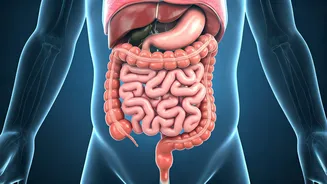Importance of Exercise
Regular physical activity is an essential component for the overall health and well-being of a child, and it can also play a role in their growth. Exercise
stimulates the release of growth hormones, which are crucial for bone development and height increase. By incorporating exercises into a child's routine, parents can provide a supportive environment for their bodies to grow and develop. These routines are not just for height; they also contribute to improved posture, better balance, and stronger muscles, all of which are essential for a healthy body. Consistent exercise also enhances cardiovascular health and boosts overall fitness, creating a foundation for a healthy lifestyle. This foundation aids in better sleep and improved focus, further supporting overall development. Parents are encouraged to make exercise a regular part of their children's lives, fostering a culture of health and well-being that extends beyond just physical growth.
The Hanging Exercise
The hanging exercise is a simple yet effective way to promote spinal elongation, which can indirectly aid in height growth. It involves hanging from a horizontal bar, allowing the spine to stretch naturally, counteracting the compression caused by daily activities. To perform this exercise safely, a child should grip the bar with both hands, allowing their body to hang freely. It's important that their feet do not touch the ground, and they should maintain this position for about 20-30 seconds. Repeat the exercise a few times, taking short breaks between each hang. It's important to ensure the child uses a bar that is at a safe height to prevent any injuries during the exercise. While hanging, children can engage their core muscles slightly, which helps with overall body strength. This exercise stretches the spine and muscles, facilitating increased space between the vertebrae and potentially contributing to height growth. This exercise should be done regularly, but it’s crucial to listen to the body and avoid overdoing it to prevent any strain. Always encourage a parent or guardian to assist their child for safety and guidance.
Swimming for Height
Swimming is an excellent full-body workout that not only enhances cardiovascular health but can also contribute to a child's height. This aquatic activity allows the body to move freely, without the impact of gravity, which helps in the elongation of the spine. When swimming, children stretch their limbs, improving flexibility and muscle strength. The different strokes, such as freestyle and backstroke, engage various muscle groups, promoting a balanced physical development. The buoyancy of water supports the body, allowing for greater freedom of movement and reduced strain on the joints. Encourage children to swim for at least 30 minutes, several times a week, to experience the benefits. Swimming also enhances lung capacity and improves overall fitness, contributing to a healthier lifestyle that supports growth. The repetitive motions and full-body engagement can boost the release of growth hormones. It is a fun and low-impact way for children to exercise, making it an enjoyable activity for long-term health and growth.
Skipping Rope
Skipping rope is a dynamic activity that can significantly benefit a child’s physical development, including potential height growth. This simple exercise involves repetitive jumping, which stimulates bone growth and enhances coordination. Skipping engages the leg muscles, improving their strength and endurance, which in turn supports bone health. It’s also a cardiovascular workout, boosting the heart rate and improving circulation, factors that contribute to overall health. It is essential to ensure that children use a rope of appropriate length, allowing enough space for comfortable movement. Encourage children to skip for 15-20 minutes daily, varying the speed and patterns to keep it engaging. Skipping also improves balance, agility, and reflexes, providing an all-round physical workout. The impact from jumping stimulates bone density, which is essential for height growth. This activity also enhances the production of growth hormones, supporting a child's physical development. Remember to supervise children, and choose a safe, flat surface for this exercise.
Cycling for Growth
Cycling is another beneficial exercise for children that contributes to overall well-being, including potential height growth. The pedaling motion of cycling works the leg muscles and stimulates the release of growth hormones, which are essential for bone development. Cycling is a low-impact activity that is suitable for all ages and fitness levels. It helps improve cardiovascular health and enhances endurance. It is important to ensure that the bicycle fits the child appropriately to prevent any strain or discomfort. Adjust the seat height so that the child's feet can comfortably reach the pedals. Encourage children to cycle for at least 30 minutes, several times a week. Cycling can be done outdoors or on stationary bikes, making it a flexible exercise option. The repetitive leg motions help strengthen the muscles, and regular cycling improves overall fitness. It's important for children to wear helmets and safety gear to prevent injuries. Cycling helps strengthen bones, promotes flexibility, and helps to maintain a healthy weight.
Stretching Exercises
Stretching is an essential component of any exercise routine, particularly for children aiming to support their growth. Regular stretching helps to elongate the muscles and increase flexibility, which are crucial for optimal growth. Simple stretches like reaching for the toes, arm stretches, and side bends can all contribute. Encourage children to perform these stretches daily, holding each stretch for about 15-20 seconds. It’s important to ensure they don't overstretch, as this can cause injuries. Stretching increases blood flow, which in turn supplies the bones with essential nutrients for development. These exercises should be performed gently and gradually, emphasizing slow movements. The aim is to increase flexibility, and stretching should never feel painful. Performing stretches before and after other exercises is recommended, helping to prepare the body and prevent muscle soreness. Stretching can be a fun activity, and it can be incorporated into games to make it more engaging for children. When stretching regularly, it helps with posture, creating a supportive environment for height growth.
Yoga Poses Benefit
Yoga, with its various poses, is a holistic exercise that promotes physical health and well-being in children, with a focus on supporting their height. Specific yoga poses can help to lengthen the spine, strengthen the muscles, and improve overall flexibility. Poses like the Cobra Pose (Bhujangasana), the Mountain Pose (Tadasana), and the Triangle Pose (Trikonasana) are particularly beneficial. These poses enhance flexibility and promote proper posture, creating an ideal environment for growth. Encourage children to practice yoga regularly, and it's best to start with guided sessions led by an experienced instructor. Proper alignment and technique are essential to get the most benefits. Yoga also incorporates deep breathing exercises, which improve oxygen flow, contributing to overall health and promoting growth. Yoga helps build core strength, which is essential for maintaining good posture. Yoga promotes a sense of calm and well-being, reducing stress, which can indirectly help in growth.
Diet and Nutrition
While exercise is crucial, it’s also important to combine it with a balanced diet to maximize the potential for height growth in children. A diet rich in essential nutrients provides the building blocks for healthy bones and muscles. Ensure the child's diet includes adequate amounts of protein, calcium, vitamin D, and other important vitamins and minerals. Protein is essential for muscle growth, calcium is vital for bone development, and vitamin D helps the body absorb calcium. Encourage children to eat a variety of fruits, vegetables, whole grains, lean proteins, and dairy products. Avoid excessive amounts of processed foods, sugary drinks, and unhealthy fats. Proper hydration is also essential, so encourage them to drink plenty of water throughout the day. A healthy diet supports overall health, and regular physical activity can maximize the benefits of exercise. It's advisable to consult with a pediatrician or a nutritionist for personalized dietary advice, as they can recommend the best nutrition plans for the child's growth and overall development.














